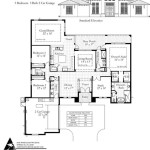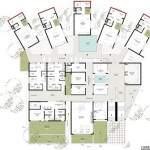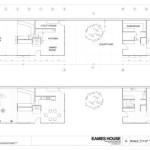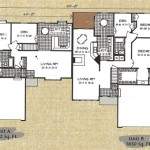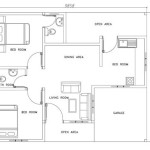Designing Your Own House Plans
Building a home is a significant undertaking, often a once-in-a-lifetime experience. The process involves meticulous planning, careful consideration of your needs and preferences, and a thorough understanding of the nuances of design and construction. While hiring an architect or professional designer can be advantageous, designing your own house plans offers a unique opportunity to create a space that perfectly reflects your vision and lifestyle. This article will explore the key aspects of designing your own house plans, providing insights and practical advice to guide you through the process.
Understanding Your Needs and Preferences
The first step in designing your own house plans is to gain a comprehensive understanding of your specific needs and preferences. This involves a thorough introspection into your lifestyle, family dynamics, and aspirations for your future home. Consider the following questions:
- Who will be living in the house? Are you a single person, a couple, a family, or something else? The number of occupants and their ages will determine the required number of bedrooms, bathrooms, and living spaces.
- What are your hobbies and interests? Do you enjoy gardening, entertaining, or working from home? These activities may require dedicated spaces, such as a home office, a hobby room, or a spacious backyard.
- What is your budget? Setting a realistic budget is crucial. Consider not only the cost of construction but also the ongoing expenses, such as utilities, maintenance, and property taxes.
- What is your desired style? Do you prefer a modern, traditional, or eclectic aesthetic? Think about the colors, materials, and finishes that resonate with you.
- What are your environmental considerations? Are energy efficiency, sustainability, or eco-friendly features important to you?
The answers to these questions will provide a solid foundation for your design decisions and ensure that your house plans effectively meet your individual requirements.
Creating a Floor Plan
Once you have a clear understanding of your needs and preferences, you can begin creating a floor plan. Floor plans are the foundation of your house design, outlining the layout of rooms, their dimensions, and their relationships to each other. There are various tools and resources available to assist you in this process, including:
- Computer-Aided Design (CAD) Software: CAD programs offer advanced features for creating detailed and accurate floor plans. Some popular options include AutoCAD, Revit, and SketchUp.
- Online Floor Plan Design Tools: Numerous online platforms provide user-friendly interfaces for creating floor plans without the need for specialized software. Examples include Floorplanner, Roomstyler, and Planner 5D.
- Graph Paper and Pencil: For a more traditional approach, you can use graph paper and a pencil to sketch out your floor plan. This method allows for flexibility and creative freedom but may require more time and effort.
Regardless of the method you choose, ensure your floor plan is to scale, meaning the dimensions of your rooms are accurately represented on paper. Pay close attention to the flow of traffic between rooms, the placement of windows and doors, and the efficiency of the overall layout.
Adding Architectural Details
Once your floor plan is complete, you can start adding architectural details to your house plans. This includes elements such as:
- Exterior Design: Determine the style of your home's exterior, considering factors like roof pitch, siding materials, windows, and doors. Research different architectural styles to find one that aligns with your taste.
- Interior Finishes: Choose flooring, wall finishes, paint colors, and fixtures that complement your design aesthetic. Consider your budget and the longevity of different materials.
- Lighting: Plan the lighting fixtures to create the desired ambiance in each room. This includes both natural light, through windows, and artificial light, through ceiling fixtures, sconces, and lamps.
- Landscaping: Consider the landscaping around your home, creating a beautiful and functional outdoor space. This could include patios, gardens, lawns, and walkways.
Adding these details will bring your house plans to life and ensure your home reflects your personal vision. Consider exploring local home improvement stores, online design retailers, and architectural resources to gather inspiration and gather information on available materials and finishes.

From Sketch To Reality How Design A House You Ll Love

Design Your Own Home House Designing Homes

Designing My Own House

How To Design And Build Your Own House 12 Steps With Pictures

From Sketch To Reality How Design A House You Ll Love

Where You Can Buy House Plans Live Home 3d

Make Your Own Blueprint How To Draw Floor Plans Drawing House Sketch Plan Blueprints

Make Your Own Blueprint How To Draw Floor Plans

Create Floor Plan

3d Home Design Architect For Your Own House Free Planner Homify


